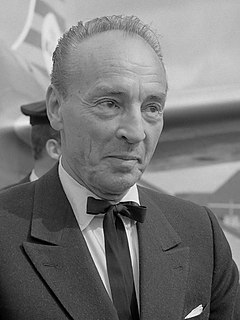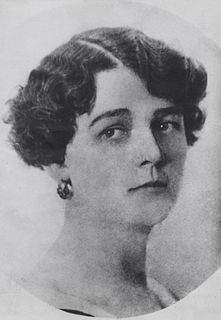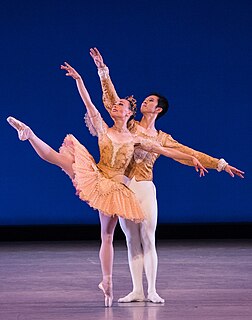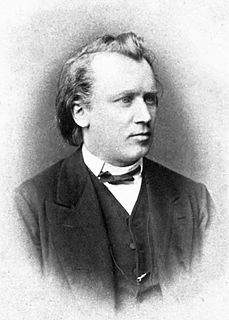Related Research Articles

George Balanchine was an American ballet choreographer who was one of the most influential 20th-century choreographers. Styled as the father of American ballet, he co-founded the New York City Ballet and remained its Artistic Director for more than 35 years. His choreography is characterized by plotless ballets with minimal costume and décor, performed to classical and neoclassical music.
Darci Kistler is an American ballerina. She is often said to be the last muse for choreographer George Balanchine.

Varvara Jmoudsky, better known as Barbara Karinska or simply Karinska, was costumer of the New York City Ballet, and the first costume designer ever to win the Capezio Dance Award, for costumes "of visual beauty for the spectator and complete delight for the dancer".
Graduation Ball is a ballet in one act choreographed by David Lichine to music composed by Johann Strauss II and arranged by Antal Doráti. With a scenario devised by Lichine and with scenery and costumes designed by Alexandre Benois, it was first presented by the Original Ballet Russe at the Theatre Royal, Sydney, Australia, on 1 March 1940.
Jewels is a three-act ballet created for the New York City Ballet by co-founder and founding choreographer George Balanchine. It premièred on Thursday, 13 April 1967 at the New York State Theater, with sets designed by Peter Harvey and lighting by Ronald Bates.

Theme and Variations is a ballet choreographed by George Balanchine to the final movement of Tchaikovsky's Orchestral Suite No. 3. The ballet was made for Ballet Theatre, and premiered on November 26, 1947, at the City Center 55 Street Theater, with the two leads danced by Alicia Alonso and Igor Youskevitch.
Tarantella is a ballet choreographed by George Balanchine to Grande Tarantelle by Louis Moreau Gottschalk, arranged by Hershy Kay. The ballet premiered on January 7, 1964, at the New York City Center, performed by New York City Ballet's Patricia McBride and Edward Villella.
Symphony in C, originally titled Le Palais de Cristal, is a ballet choreographed by George Balanchine, to Georges Bizet's Symphony in C. The ballet was originally created for the Paris Opera Ballet, and premiered on July 28, 1947 at Théâtre National de l'Opéra.
Episodes is a two-part ballet made by Martha Graham and George Balanchine to Anton von Webern's Symphony, Op. 21, Five Pieces, Op. 10, Concerto, Op. 24, and the Ricercata in Six Voices from Bach's Musical Offering, which Webern had arranged in homage to Bach, as Balanchine conceived the ballet as one to Webern. The premiere took place under the auspices of the Ballet Society on 19 May 1959 at City Center of Music and Drama, New York, with scenery and lighting by David Hays; the conductor was Robert Irving.
Kyra Nichols is an American retired ballet dancer and teacher. She joined the New York City Ballet in 1974 and was promoted to principal dancer in 1979. She is one of the last dancers to have worked with George Balanchine, although he did not create any new work on her. However, she originated roles in several ballets by Jerome Robbins. Nichols retired from performing in 2007, after a 33-year career.
La Sonnambula(The Sleepwalker) is a ballet by the co-founder and ballet master of New York City Ballet, George Balanchine, made to Vittorio Rieti's music using themes from the operas of Vincenzo Bellini including La Sonnambula, Norma, I Puritani and I Capuleti e i Montecchi (1830–35).
In the Night is a ballet choreographed by Jerome Robbins to four nocturnes by Frédéric Chopin. It premiered on January 29, 1970 at the New York State Theater, performed by the New York City Ballet.
Union Jack is a ballet made by New York City Ballet co-founder and founding choreographer George Balanchine to traditional British tunes, hornpipe melodies and music-hall songs, ca. 1890–1914, adapted by Hershy Kay. The premiere took place on 13 May 1976, at the New York State Theater, Lincoln Center, to honor British heritage in the United States its bicentennial with costumes by Rouben Ter-Arutunian, original lighting by Ronald Bates and current lighting by Mark Stanley. At the finale the ensemble spells out "God Save the Queen" in semaphore code and the Union Jack unfurls. Principal dancer Jock Soto included an excerpt from Union Jack in his farewell performance in June 2005.

Dances at a Gathering is a ballet choreographed by Jerome Robbins to music by Frédéric Chopin, with costumes designed by Joe Eula. The ballet premiered on May 22, 1969, at the New York State Theater, performed by the New York City Ballet.
Mozartiana is a ballet by New York City Ballet co-founder and balletmaster George Balanchine which opened their Tschaikovsky Festival. It is the choreographer's third homage to Mozart and is set to Pyotr Ilyich Tchaikovsky's Suite No. 4, Mozartiana, Op. 61 (1887), consisting of:
Brahms–Schoenberg Quartet is a one-act ballet by George Balanchine, to Johannes Brahms's Piano Quartet No. 1, orchestrated by Arnold Schoenberg. The ballet premiered on April 21, 1966 at the New York State Theater, performed by the New York City Ballet.
Vienna Waltzes is a ballet made by New York City Ballet co-founder and founding choreographer George Balanchine to music by Johann Strauss, Jr., Franz Lehár, and Richard Strauss:
Les Ballets 1933 was a ballet company started by Boris Kochno and George Balanchine, which Balanchine used to create new works that were completely his own, set to music that no one had yet choreographed. The company ran for less than four weeks in 1933 and tailored itself to small, wealthy audiences in Paris and London, but despite its scale, it came out with works that Balanchine later used to instruct at his School of American Ballet, and in the programs of his later companies. Outside a theatre for Les Ballets, Balanchine first met Lincoln Kirstein.
Liebeslieder may refer to love songs in general, or to these specific works:

Johannes Brahms' Liebeslieder Waltzes (Liebeslieder-Walzer) are distributed across two opus numbers: Op. 52 and Op. 65. The waltzes are a collection of love songs in Ländler style for voices and piano four hands. The lyrics for the Liebeslieder come from Georg Friedrich Daumer's Polydora, a collection of folk songs and love poems. While there is no concrete record indicating the exact inspiration for the Waltzes, there is speculation that Brahms' motivation for the songs was his frustrated love for pianist and composer Clara Schumann.
References
- 1 2 3 4 5 6 7 "Liebeslieder Walzer". Oxford Reference.
- 1 2 "Liebeslieder Walzer". New York City Ballet.
- 1 2 Kisselgoff, Anna (20 May 1984). "Dance View; Balanchine Infused Waltzes With Subtle Drama". The New York Times.
- 1 2 Macaulay, Alastair (2 October 2015). "Review: 'Liebeslieder Walzer' and 'Tschaikovsky Suite No. 3,' Balanchine Couples Baring Their Souls". The New York Times.
- 1 2 3 4 5 Macaulay, Alastair (26 February 2019). "Balanchine's Dark Waltzes: Can Love Suffice?". The New York Times.
- ↑ Macaulay, Alastair (21 May 2012). "Expressions of Love That Bridge Real and Ethereal Worlds". The New York Times.
- 1 2 3 4 Kisselgoff, Anna (12 May 1984). "Dance: 'Liebeslieder; Restored By City Ballet". The New York Times.
- ↑ Anderson, Jack (15 January 1999). "Dance Review; The Wonders of Waltzing, In Fantasy And Reality". The New York Times.
- ↑ Dunning, Jennifer (3 May 2004). "Dance Review; Present Congratulates Past, Bowing to City Ballet Alumni". The New York Times.
- 1 2 3 4 5 Martin, John (23 November 1960). "Ballet: Brahms' Waltzes". The New York Times.
- 1 2 Jennings, Luke; Bull, Deborah (2004). The Faber Pocket Guide to Ballet. ISBN 9780571260959.
- 1 2 Sulcas, Roslyn (19 May 2006). "All Balanchine and All Brahms at the New York City Ballet". The New York Times.
- 1 2 Taper, Bernard (5 January 1997). "Keepers of the Treasured Balanchine Flame". The New York Times.
- ↑ Kaufman, Sarah (20 October 2008). "A Leap to Lift Spirits". The Washington Post.
- ↑ Kisselgoff, Alastair (22 February 2000). "Ballet Review; An Evening of Spats, Whispers and Passion in the Drawing Room". The New York Times.
- ↑ Reynolds, Nancy (1977). Repertory in Review.
- 1 2 3 "335. Liebeslieder Walzer". The George Balanchine Foundation.
- ↑ "New York City Ballet Announces Casting for Weeks One and Two of Their Digital Season". BroadwayWorld. 21 September 2020.